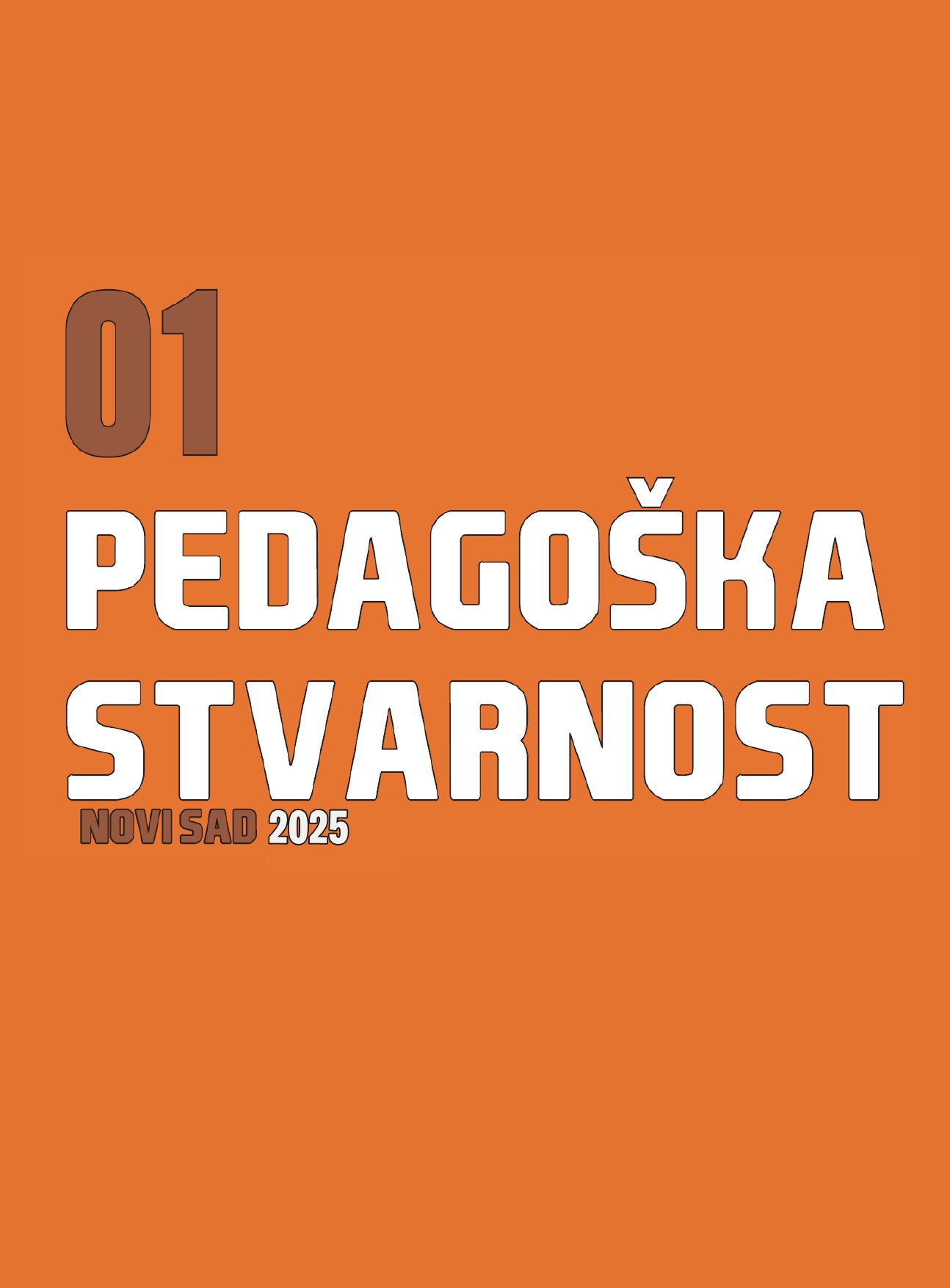Eksternalizovani i internalizovani problemi kao prediktori nestabilnosti smeštaja dece bez roditeljskog staranja
Originalni naučni rad
Apstrakt
Poslednjih godina se sistem socijalne zaštite suočava sa brojnim izazovima u zaštiti dece bez roditeljskog staranja, među kojima se aktuelno ističe nestabilnost smeštaja. Cilj ovog istraživanja bio je utvrđivanje povezanosti eksternalizovanih i internalizovanih problema deteta sa jedne strane i učestalosti promene smeštaja sa druge. Uzorak su činila sva deca koja su tokom prethodnih 12 godina primljena na smeštaj u Dom za decu i omladinu „Jefimija“ u Kruševcu (N = 62). Podaci o detetu, primarnoj porodici i istoriji smeštaja prikupljeni su analizom dokumentacije dostupne u dosijeima korisnika. Rezultati istraživanja su pokazali da je nestabilnost smeštaja visoko zastupljena u ispitivanom uzorku (93.5%), pri čemu se kao najsnažniji prediktor izdvaja prisustvo eksternalizovanih problema ponašanja (β = .41, p < .001). Ostali izdvojeni prediktori su mlađi uzrast dece pri izmeštanju iz porodice, postavljena dijagnoza poremećaja ponašanja i kontakti sa primarnom porodicom. Prisustvo internalizovanih problema nije imalo statističku značajnost. Nalazi su konzistentni sa prethodnim istraživanjima ovog problema i potvrđuju da su deca sa eksternalizovanim problemima u povišenom riziku od nestabilnosti smeštaja. Razmotrene su implikacije za dalja istraživanja i unapređenje prakse kroz razvoj preventivnih intervencija i sistema podrške koji bi smanjili rizik od nestabilnosti smeštaja i poboljšali ishode za decu bez roditeljskog staranja.
Reference
Asif, N., Breen, C., & Wells, R. (2024). Influence of placement stability on developmental outcomes of children and young people in out-of-home care: Findings from the Pathways of Care Longitudinal Study. Child Abuse & Neglect, 149, 1-12.
Bederian-Gardner, D., Hobbs, S. D., Ogle, C. M., Goodman, G. S., Cordón, I. M., Bakanosky, S., Narr, R., Chae, Y., Chong, J. Y., & NYTD/CYTD Research Group. (2018). Instability in the lives of foster and nonfoster youth: Mental health impediments and attachment insecurities. Children and Youth Services Review, 84, 159-167.
Burgund-Isakov, A., & Hrnčić, J. (2018). Preparedness for emancipation of youth leaving alternative care in Serbia. International Journal of Child, Youth and Family Studies, 9(1), 83-107.
Chamberlain, P., Price, J. M., Reid, J. B., Landsverk, J., Fisher, P. A., & Stoolmiller, M. (2006). Who disrupts from placement in foster and kinship care? Child Abuse & Neglect, 30(4), 409-424.
Christiansen, Ø., Havik, T., & Anderssen, N. (2010). Arranging stability for children in long-term out-of-home care. Children and Youth Services Review, 32(7), 913-921.
De Carvalho, J., & Chima, F. O. (2020). A regression analysis of juvenile delinquency among African American females in foster care. Journal of Liberal Arts and Humanities, 1(5), 1-15.
Engler, A. D., Sarpong, K. O., Van Horne, B. S., Greeley, C. S., & Keefe, R. J. (2022). A systematic review of mental health disorders of children in foster care. Trauma, Violence, & Abuse, 23(1), 255-264.
Esposito, T., Trocmé, N., Chabot, M., Collin-Vézina, D., Shlonsky, A., & Sinha, V. (2014). The stability of child protection placements in Québec, Canada. Children and Youth Services Review, 42, 10-19.
Font, S. A., Sattler, K. M., & Gershoff, E. T. (2018). Measurement and correlates of foster care placement moves. Children and Youth Services Review, 91(1), 248-258.
Holtan, A., Handegård, B. H., Thørnblad, R., & Vis, S. A. (2013). Placement disruption in long-term kinship and nonkinship foster care. Children and Youth Services Review, 35(7), 1087-1094.
James, S., Roesch, S., & Zhang, J. J. (2012). Characteristics and behavioral outcomes for youth in group care and family-based care: A propensity score matching approach using national data. Journal of Emotional and Behavioral Disorders, 20(3), 144-156.
Jedwab, M., Xu, Y., Keyser, D., & Shaw, T. V. (2019). Children and youth in out-of-home care: What can predict an initial change in placement? Child Abuse & Neglect, 93, 55-65.
Koh, E., Rolock, N., Cross, T. P., & Eblen-Manning, J. (2014). What explains instability in foster care? Comparison of a matched sample of children with stable and unstable placements. Children and Youth Services Review, 37, 36-45.
Konijn, C., Admiraal, S., Baart, J., van Rooij, F., Stams, G.-J., Colonnesi, C., Lindauer, R., & Assink, M. (2019). Foster care placement instability: A meta-analytic review. Children and Youth Services Review, 96, 483-499.
Leloux-Opmeer, H., Kuiper, C. H., Swaab, H. T., & Scholte, E. M. (2017). Children referred to foster care, family-style group care, and residential care: (How) do they differ? Children and Youth Services Review, 77, 1-9.
Maguire, D., May, K., McCormack, D., & Fosker, T. (2024). A systematic review of the impact of placement instability on emotional and behavioural outcomes among children in foster care. Journal of Child & Adolescent Trauma, 17(2), 641-655.
Marić-Ognjenović, M., i Mihić, I. (2020). Potrebe prilagođavanja hraniteljskih porodica – pregled podataka i realizovanih istraživanja u okviru projekta. U M. Zotović, i M. Oros (Ur), Efekti egzistencijalne nesigurnosti na pojedinca i porodica u Srbiji (str. 45-62). Novi Sad: Univerzitet u Novom Sadu – Filozofski fakultet.
McGuire, A., Cho, B., Huffhines, L., Gusler, S., Brown, S., & Jackson, Y. (2018). The relation between dimensions of maltreatment, placement instability, and mental health among youth in foster care. Child Abuse & Neglect, 86, 10-21.
Milojević, S., Pejaković, Lj., Zajić, G., Dakić, B., Lončar, D., Milošević, S., i Spasenić, Ž. (2016). Deinstitucionalizacija u Srbiji: Ostvareni rezultati i preporuke za dalje unapređenje prakse. Beograd: Republički zavod za socijalnu zaštitu.
Ministarstvo rada, zapošljavanja i socijalne politike. (2006). Mere za otklanjanje nepravilnosti u vršenju poslova smeštaja dece i omladine u ustanove socijalne zaštite. Preuzeto februara 2025. sa http://www.zavodsz.gov.rs/media/1730/mere-za-otkljanjanje-nepravilnosti-u-vrsenju-poslova-smestaja-dece-u-ustanove-socijane-zastite.pdf
Moore, T. D., McDonald, T. P., & Cronbaugh-Auld, K. (2016). Assessing risk of placement instability to aid foster care placement decision making. Journal of Public Child Welfare, 10(2), 117-131.
Nešić, M., i Žunić-Pavlović, V. (2023). Kontakti dece i mladih na hraniteljskom smeštaju sa porodicom porekla. Research in Pedagogy, 13(2), 267-277.
Newton, R. R., Litrownik, A. J., & Landsverk, J. A. (2000). Children and youth in foster care: Disentangling the relationship between problem behaviors and number of placements. Child Abuse & Neglect, 24(10), 1363-1374.
Oosterman, M., Schuengel, C., Slot, N. W., Bullens, R. A., & Doreleijers, T. A. (2007). Disruptions in foster care: A review and meta-analysis. Children and Youth Services Review, 29(1), 53-76.
Pejaković, Lj., i Zajić, Lj. (2016). Deinstitucionalizacija rezidencijalnih ustanova socijalne zaštite u Srbiji – trenutni status i preporuke za dalje unapređenje procesa deinstitucionalizacije. U Lj. Pejaković, G. Zajić, B. Dakić, D. Lončar, S. Milošević i Ž. Spasenić (str. 6-48), Deinstitucionalizacija u Srbiji – ostvareni rezultati i preporuke za dalje unapređenje procesa. Beograd: Republički zavod za socijalnu zaštitu.
Platt, C., & Gephart, S. M. (2022). Placement disruption of children with disabilities in foster care. Journal of Pediatric Nursing, 66, 30-35.
Proctor, L. J., Skriner, L. C., Roesch, S., & Litrownik, A. J. (2010). Trajectories of behavioral adjustment following early placement in foster care: Predicting stability and change over 8 years. Journal of the American Academy of Child & Adolescent Psychiatry, 49(5), 464-473.
Quiroga, G. M., & Hamilton-Giachritsis, C. (2016). Attachment styles in children living in alternative care: A systematic review of the literature. Child & Youth Care Forum, 45(4), 625-653.
Radulović, D. (2014). Psihološke osnove poremećaja u ponašanju. Beograd: Fakultet za specijalnu edukaciju i rehabilitaciju.
Republički zavod za socijalnu zaštitu. (2023). Izveštaj o radu ustanova za smeštaj dece i mladih. Preuzeto marta 2025. sa https://www.zavodsz.gov.rs/media/2573/izvestaj-o-radu-ustanova-za-decu-i-mlade-2022.pdf
Riemersma, Y., Harder, A., Zijlstra, E., Post, W., & Kalverboer, M. (2023). Static and dynamic factors underlying placement instability in residential youth care: A scoping review. Children and Youth Services Review, 155, Article 107298.
Rock, S., Michelson, D., Thomson, S., & Day, C. (2015). Understanding foster placement instability for looked after children: A systematic review and narrative synthesis of quantitative and qualitative evidence. British Journal of Social Work, 45(1), 177-203.
Rubin, D. M., O’Reilly, A. L., Luan, X., & Localio, A. R. (2007). The impact of placement stability on behavioral well-being for children in foster care. Pediatrics, 119(2), 336-344.
Ryan, J. P., Marshall, J. M., Herz, D., & Hernandez, P. M. (2008). Juvenile delinquency in child welfare: Investigating group home effects. Children and Youth Services Review, 30(9), 1088-1099.
Sallnäs, M., Vinnerljung, B., & Kyhle-Westermark, P. (2004). Breakdown of teenage placements in Swedish foster and residential care. Child & Family Social Work, 9(2), 141-152.
Sattler, K. M., Font, S. A., & Gershoff, E. T. (2018). Age-specific risk factors associated with placement instability among foster children. Child Abuse & Neglect, 84, 157-169.
Šilić, V. i Jandrić, G. (2015). Šta doprinosi kvalitetu staranja hranitelja od detetu? U M. Zotović, i M. Oros (Ur), Efekti egzistencijalne nesigurnosti na pojedinca i porodica u Srbiji (45-62). Novi Sad: Univerzitet u Novom Sadu – Filozofski fakultet.
Soto-Ramírez, N., Xu, Y., Martin, T., Babalola, O., Weist, M., & Flynn, C. (2024). associations of mental health service utilization and mental health diagnosis with placement instability among foster children in a southeastern state. Child and Adolescent Social Work Journal. Advance online publication. https://doi.org/10.1007/s10560-024-00962-3
Steen, J. A., & Harlow, S. (2012). Correlates of multiple placements in foster care: A study of placement instability in five states. Journal of Public Child Welfare, 6(2), 172-190.
Stefanović, N. i Stanković, M. (2021). Protection measures for the children without a parental care. Pravo – teorija i praksa, 38(4), 42-58.
Stenason, L. & Romano, E. (2023). Number of placement changes among young people in care: Youth and caregiver associations. Children and Youth Services Review, 144, Article 106737.
Strategija deinstitucionalizacije i razvoja usluga socijalne zaštite u zajednici za period 2022-2026. godine (2022). Službeni glasnik Republike Srbije, Br. 12/2022.
Terling-Watt, T. (2001). Permanency in kinship care: An exploration of disruption rates and factors associated with placement disruption. Children and Youth Services Review, 23(2), 111-126.
Van Santen, E. (2015). Factors associated with placement breakdown initiated by foster parents – empirical findings from Germany. Child & Family Social Work, 20(2), 191-201.
Vinnerljung, B., Sallnäs, M., & Berlin, M. (2017). Placement breakdowns in long‐term foster care – a regional Swedish study. Child & Family Social Work, 22(1), 15-25.
Vreeland, A., Ebert, J. S., Kuhn, T. M., Gracey, K. A., Shaffer, A. M., Watson, K. H., Gruhn, M. A., Henry, L., Dickey, L., Siciliano, R. E., Anderson, A., & Compas, B. E. (2020). Predictors of placement disruptions in foster care. Child Abuse & Neglect, 99, Article 104283.
Ward, H. (2009). Patterns of instability: Moves within the care system, their reasons, contexts and consequences. Children and Youth Services Review, 31(10), 1113-1118.
Whitt-Woosley, A. L., Sprang, G., & Friedman, M. (2024). Analysis of caregiver factors and placement instability in foster care from a trauma-informed perspective. Retrieved March 2025 from http://dx.doi.org/10.2139/ssrn.4743163
Zakon o socijalnoj zaštiti (2022). Službeni glasnik Republike Srbije, Br. 24/2011 i 117/2022.
Žegarac, N. (2014). Sistem zaštite dece u Srbiji. U N. Žegarac (Ur.), U lavirintu socijalne zaštite: pouke istraživanja o deci na porodičnom i rezidencijalnom smeštaju (str. 77-114). Beograd: Univerzitet u Beogradu – Fakultet političkih nauka i Centar za istraživanja u socijalnoj politici i socijalnom radu.
Žegarac, N., Burgund, A., i Milovanović, M. (2014). Uzorak dece na smeštaju – rezultati istraživanja. U N. Žegarac (Ur.), U lavirintu socijalne zaštite: pouke istraživanja o deci na porodičnom i rezidencijalnom smeštaju (str. 151-215). Beograd: Univerzitet u Beogradu – Fakultet političkih nauka i Centar za istraživanja u socijalnoj politici i socijalnom radu.
Žunić-Pavlović, V. i Nešić, M. (2024). Učestalost i prediktori promene smeštaja dece i mladih bez roditeljskog staranja. Zbornik Matice Srpske za društvene nauke, 188(4), 555-569.







